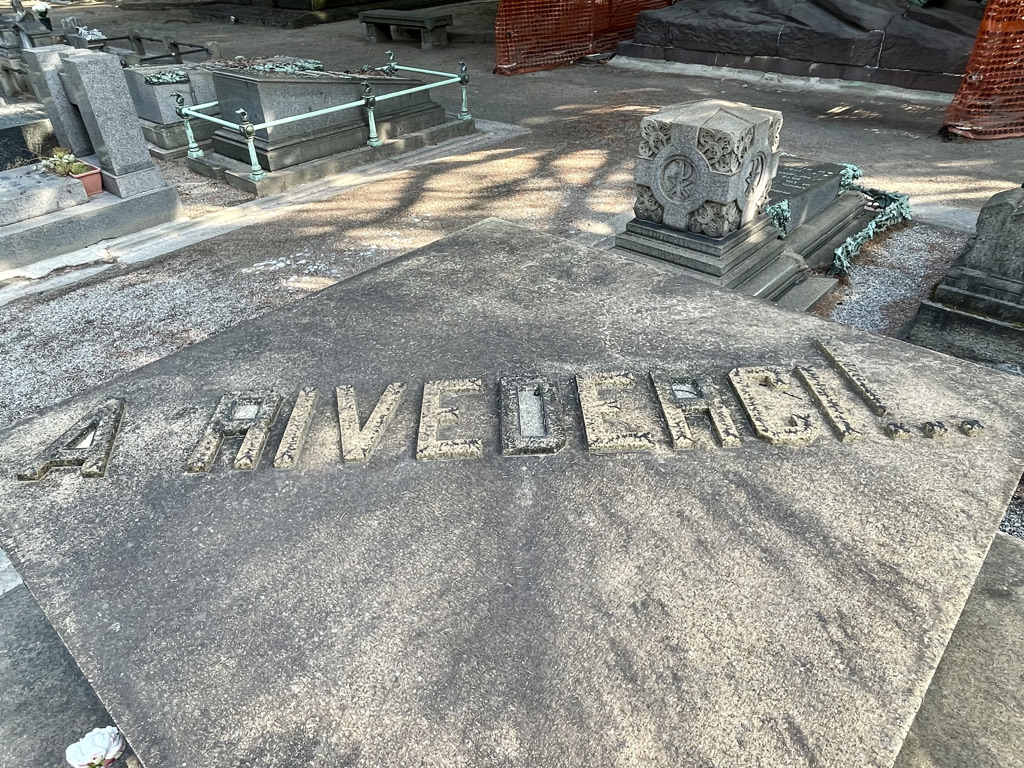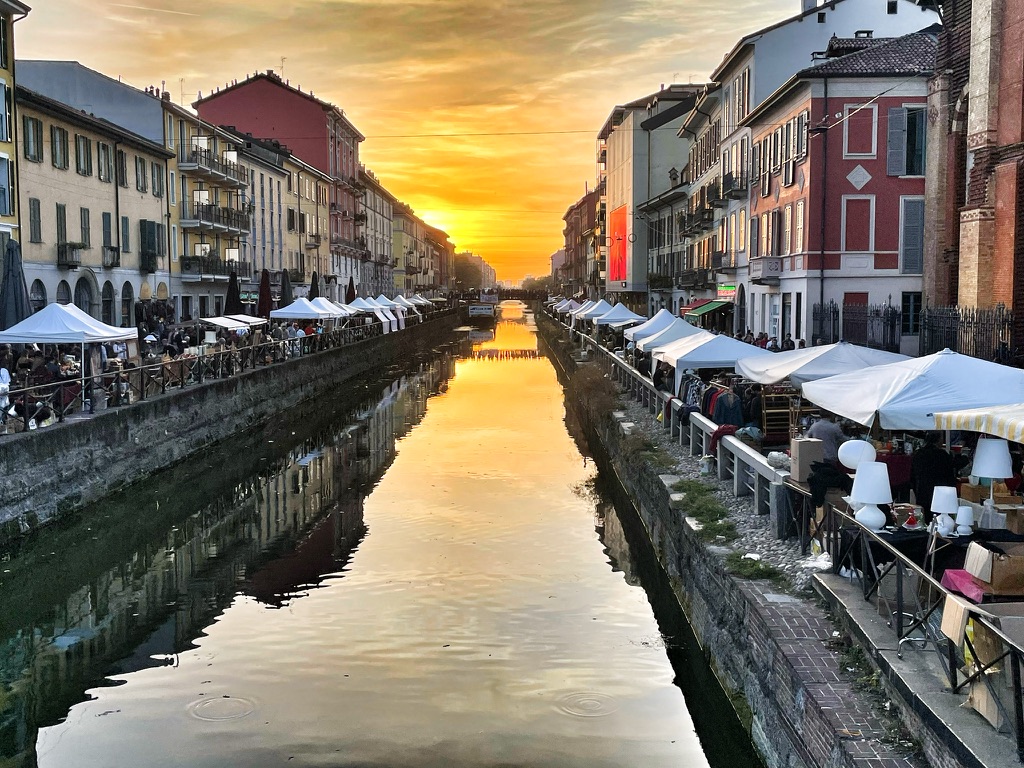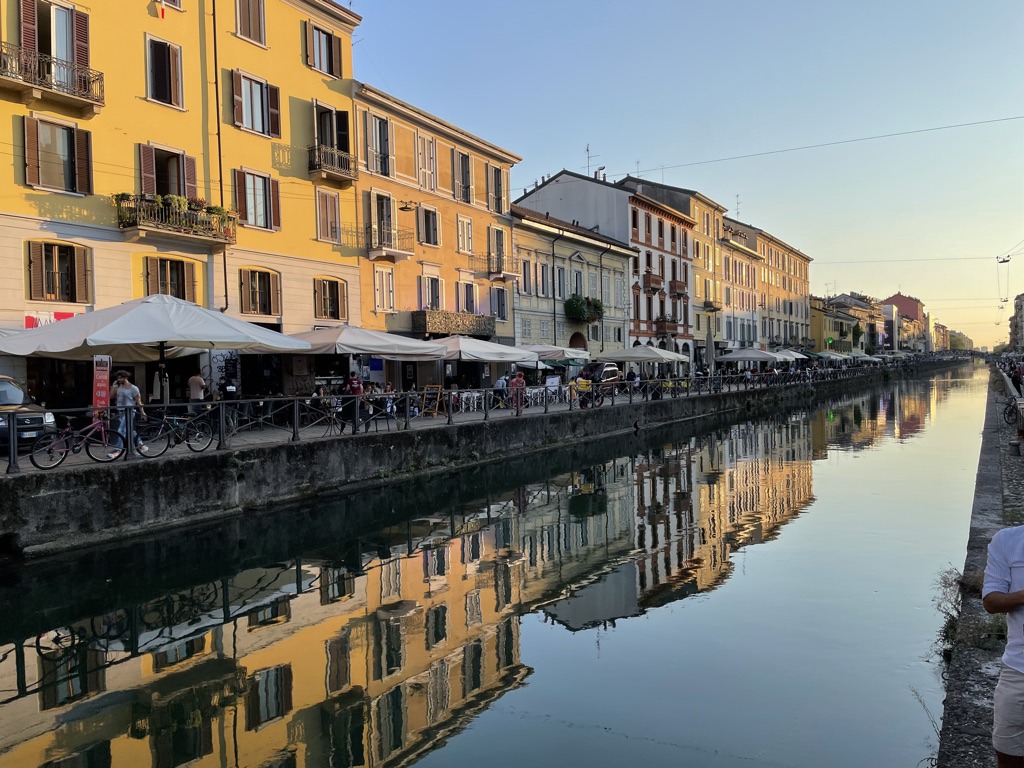The first time I visited Milan (Milano), I discovered five hidden gems in that even frequent visitors might not know about. As one of my favorite cities in Italy, Milan offers so much more beyond the usual tourist attractions. From the fascinating Cimitero Monumentale to the iconic Navigli canals, these lesser-known places reveal a side of the city many overlook.
Cimiterio Monumentale
As someone who has no interest in cemeteries, I find Milano’s Cimitero Monumentale fascinating. It blends history, art, and architecture in what serves as both a burial ground and an open-air museum.
Covering more than 60 acres, the cemetery has more than 15,000 sculptures and mausoleums as well as ossuaries and columbariums. You read that right: more than 15,000 sculptures and mausoleums, making it one of the largest cemeteries in Italy. There architectural styles—from Byzantine and Gothic to Modernist—are a reflection of the diverse tastes of Milano’s elite families.


The main entrance, aka the Famedio (Below), houses the tombs of some of Italy’s most illustrious writers, artists, and politicians. But, the cemetery’s fame lies in its impressive collection of monumental tombs, mausoleums, and sculptures. These monuments are not only memorials but also works of art. Created by some of Italy’s best sculptors, they tell the stories of influential families, politicians, artists, and industrialists.

Beyond the artistic and architectural significance, the Cimitero Monumentale is also a reflection of Milano’s social and cultural evolution. It includes sections for various religious communities, a Jewish section, and a non-Catholic section. There is also an area for those who died in World War I. The cemetery serves as a poignant reminder of the city’s diversity and its role in shaping modern Italy.
Mausoleums and Tombs
One of the largest memorials is the bronze Last Supper that honors the Campari family of Campari liquor fame. Davide Campari, son of Campari founder Gaetano, commissioned sculptor Giannino Castiglioni to sculpt this over-size scene in 1935. No one is buried in the sculpture, but behind it is a staircase that leads to the mausoleum below.


My favorite tomb was one we found on the main walkway in the cemetery. The tomb is quite large, maybe five-feet square. There were no names that I saw, but one said said “Madre e Figlio” (Mother and Son). The best part, though, was the “Arrivederci!!!” on top.
Bosco Verticale
I first saw the Bosco Verticale (Vertical Forest) in 2015. At the time, I knew very little about Milan, so seeing the Bosco as we drove by was a surprise. I’ve since discovered that Milan is committed to green architecture, and the Bosco has become a symbol of the city’s commitment.

A pair of innovative residential towers designed by Stefano Boeri, the Bosco opened in 2014. The buildings feature nearly 800 trees and thousands of plants, creating a vertical forest within the city. This design enhances air quality, reduces noise pollution, and moderates building temperatures, offering a sustainable urban living model. Located in the Porta Nuova district, the Bosco Verticale blends nature and reforestation with urban development. It has influenced similar projects worldwide.
The Madonnina
Perched atop the spire of the Milan’s iconic Duomo is a gilded copper statue of the Virgin Mary. The statue stands 4.16 meters tal and is visible from various points across Milan. Since her installation in 1774 by sculptor Giuseppe Perego, the Madonnina has become a symbol of protection for the Milanese.

The statue holds great cultural and spiritual significance and represents Milan’s deep Catholic roots. The phrase “O mia bela Madunina,” from a famous Milanese song, reflects the locals’ affection for this cherished figure.
Traditionally, no building in Milano was to be taller than the Madonnina. When the Pirelli Building opened in the 1950s, contractors placed a smaller replica of the Madonnina atop it (417 feet). When completed in 2010, Palazzo Lombardia’s contractors put another replica of the Madonnina atop it (528 feet). In 2015, the Madonnina took er place on the Allianz Tower to watch over the city from her 686-feet perch.
Turning on the Bull
A tradition I knew nothing about until three years ago involves a mosaic on the floor of Milano’s Galleria. A bull’s image, taken from Torino’s coat of arms, is part of the Galleria’s intricate tile work. It lies prominently in the Galleria’s central octagon. According to local legend, spinning three times on the bull’s testicles with your heel is said to bring good luck.

Over time, this practice has worn the tile in that area. Still, spinning on the bull remains a beloved ritual for both locals and tourists. The tradition adds a playful, superstitious charm to the grand elegance of the Galleria, one of Milano’s most famous landmarks.
The Navigli Canals
Most people do not realize that Venice was not the only Italian city to be home to canals. Today, Chioggia, Comacchio, and Trieste feature canals, bridges, and buildings similar to those of Venice. Milano, though, once had 90 kilometers of canals.
The Navigli canals in Milano are a historic and picturesque network of waterways that date back to the 12th century. They played a crucial role in Milano’s economic development. In addition, they were instrumental in bringing marble used in constructing the Duomo from Candoglia.


Leonardo da Vinci designed a system of the locks in the canals to connect Lake Como to Milano. The height difference of the territory made the navigation from one town to the other difficult. Da Vinci’s dams solved that problem.
Today, the Navigli district is one of Milan’s most vibrant neighborhoods. Lined with charming cafes, artisan shops, and art galleries, the canals are a popular destination for both locals and tourists. During the traditional “aperitivo” hours, you’ll find hundreds of people enjoying drinks and snacks along the waterways.


